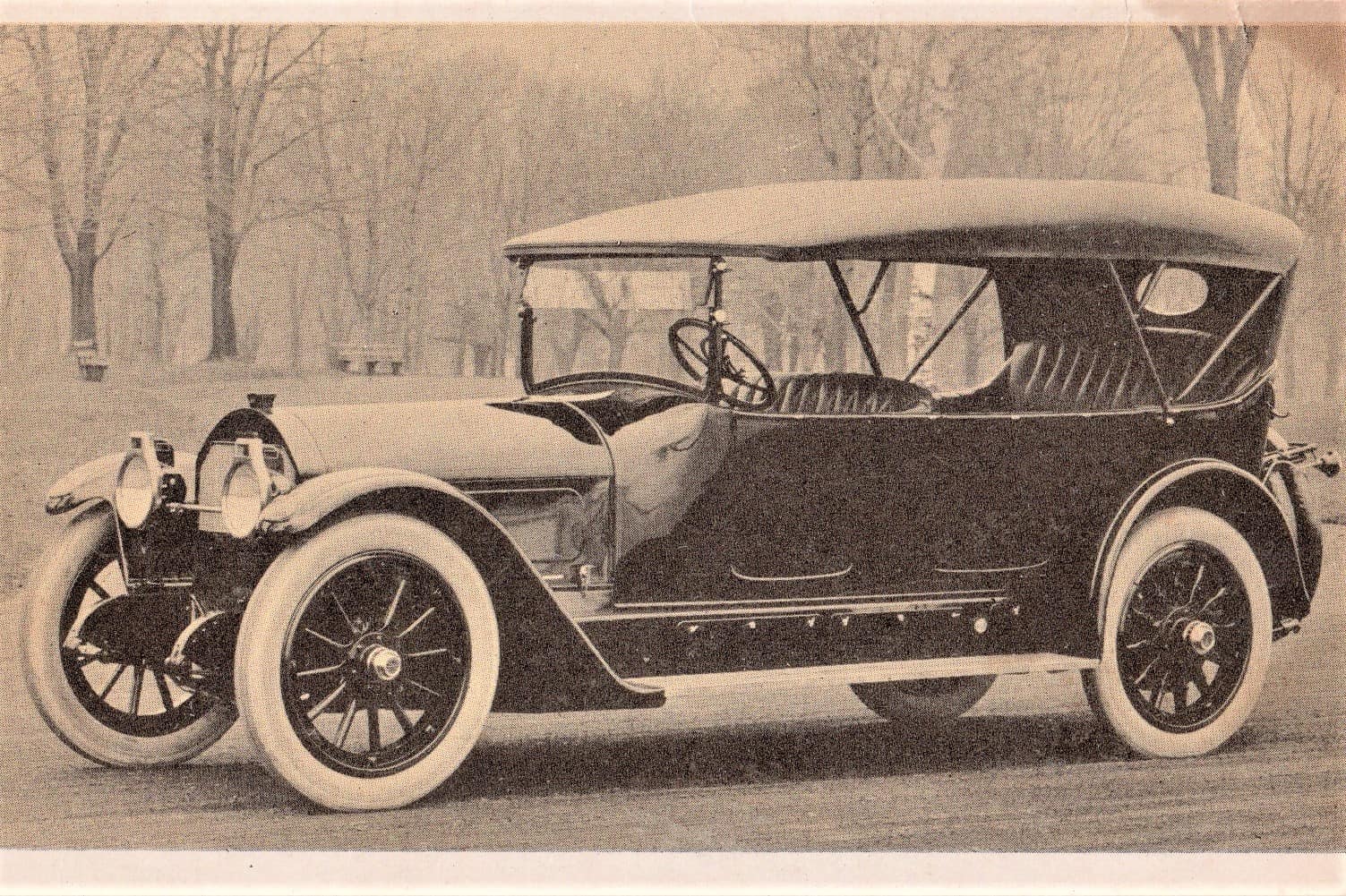On the first page of the Locomobile catalog for 1916 is the following statement: “The Locomobile policy is to build not more than four cars a day in order to attain the highest excellence in every essential and in every detail… The Locomobile is designed for those who are fully able to enjoy the best and who are never satisfied with anything less.”
The Locomobile Company of Bridgeport, Connecticut, in 1902 hired Andrew Riker, who designed the company’s first gas-powered car, the acclaimed racer that would win the Vanderbilt Cup in 1908, and all succeeding models through 1917.
Riker was an engineer of the highest order and co-founder of the Society of Automotive Engineers. His drive for perfection created Locomobile’s reputation as one of the finest built automobiles in the United States.
The Automobile Topics edition of May 6, 1916. lavishes a two-page spread on the new 1917 Locomobiles. Titled “Locomobile Redoubles Refinement,” the article goes into the many detailed refinements for that model year but also notes that there are no radical changes. Among the refines are listed:
• The bodies on all models (M-7 & R-7) are lowered 3 inches; the cars look longer but are really an inch shorter in the wheelbase.
• The front springs have been made longer and flatter for easier riding.
• Reciprocating parts have been made lighter and they, with the crankshaft and flywheel, have been more carefully balanced.
• An entirely new carburetor, of the two-stage type, is economical and provides an extra jet for extra hard pulling.
• Time-tried Locomobile characteristic features have been retained, such as manganese bronze crankcase and gearbox, pair-cast cylinders, T-head motor, condensed Babbitt bearing linings, extremely deep upholstery, steel-center rear axle, etc.
On the eve of WWI, the Locomobile Company of America was at the height of its success when it’s astute leader, Samuel Davis, died of a stroke in 1915. A change in leadership along with the changes in production due to the war effort, left the company short of cash in 1919 and forced it to into a bankruptcy sale.
In 1921, Riker moved on and the company eventually became part of Durant Motors, although it would succumb to financial pressures and go out of business for good in 1929. But one could argue that the heart of the Locomobile company died when Riker left and the vehicles they produced were never quite the same.






Steve:
I do not know if this site is out of date noting 2018. If it is not, please send me an e-mail as I have Locomobile literature that I would be happy to share with you.
Hello, Just happened on this site. I am interested in Locomobile. What years are in you Locomobile literature? I sure recognize your Last name.
Thanks hope this finds you. George